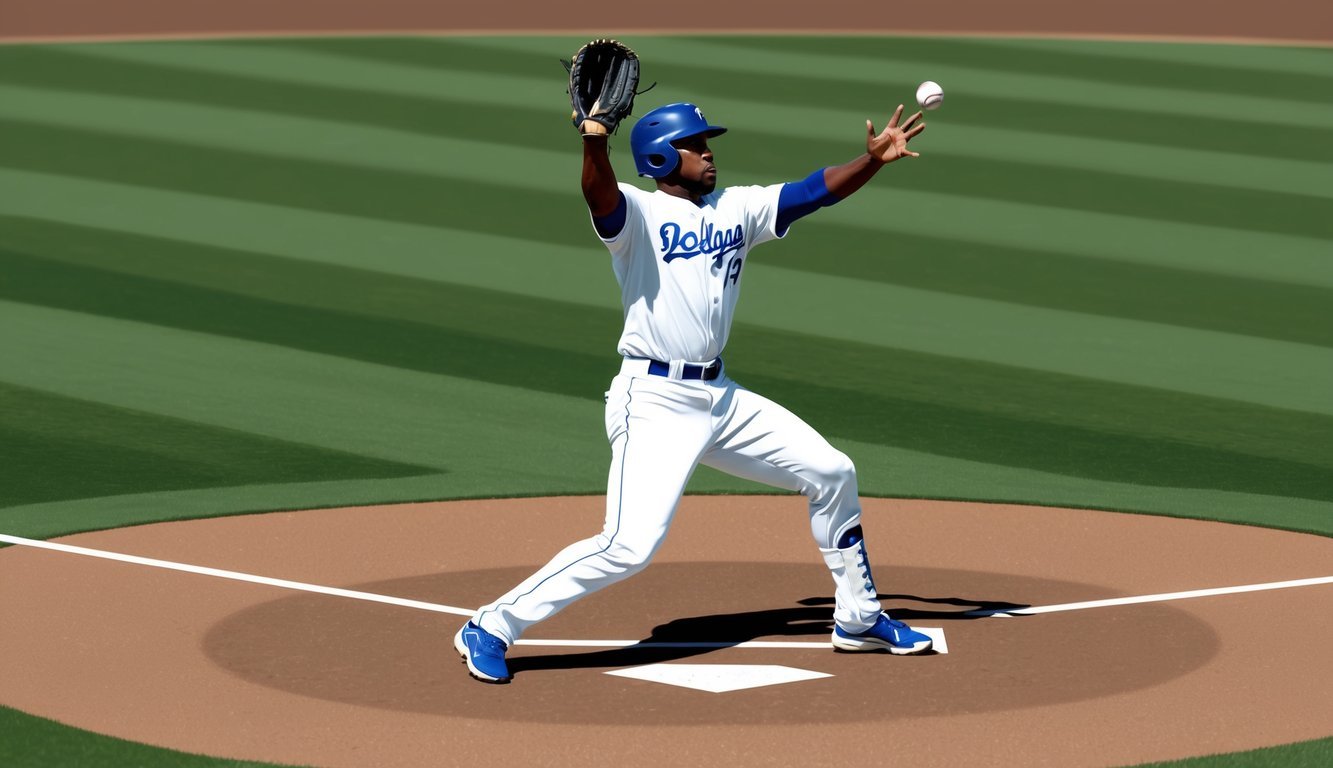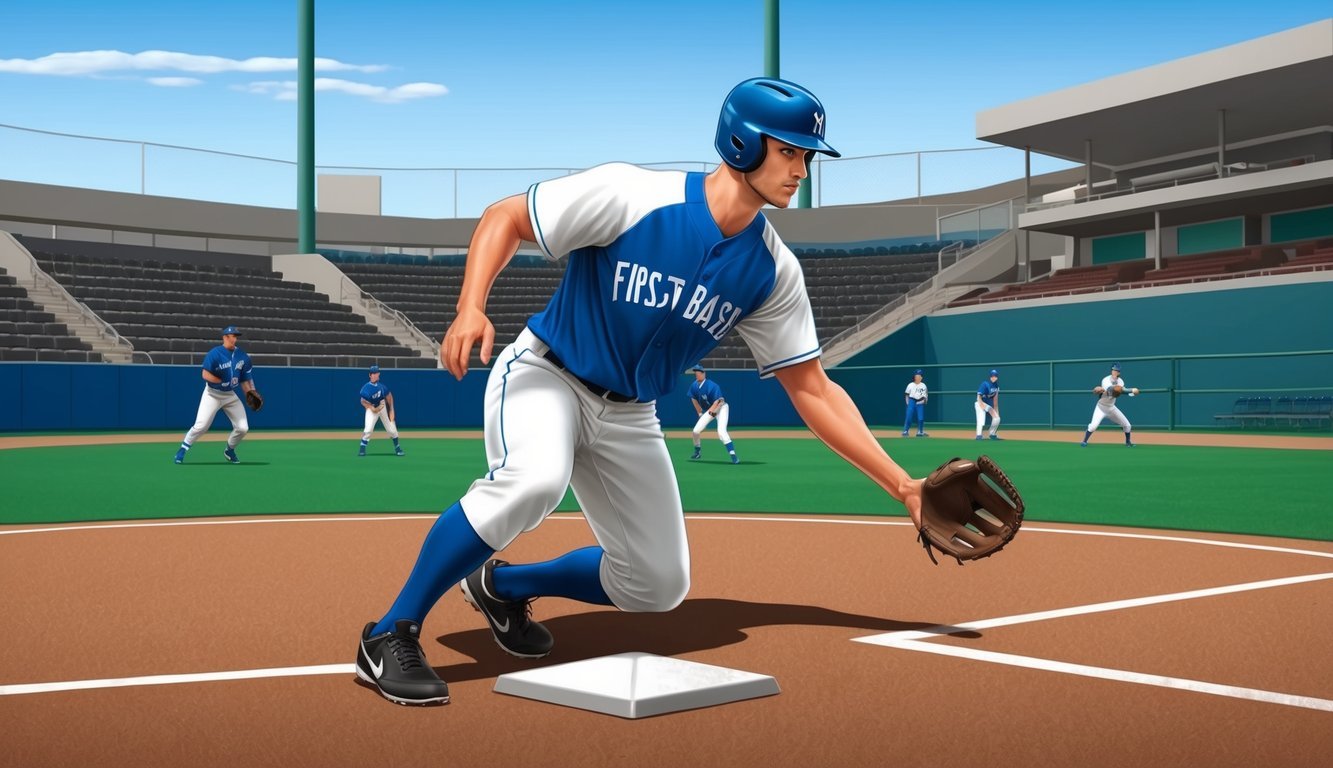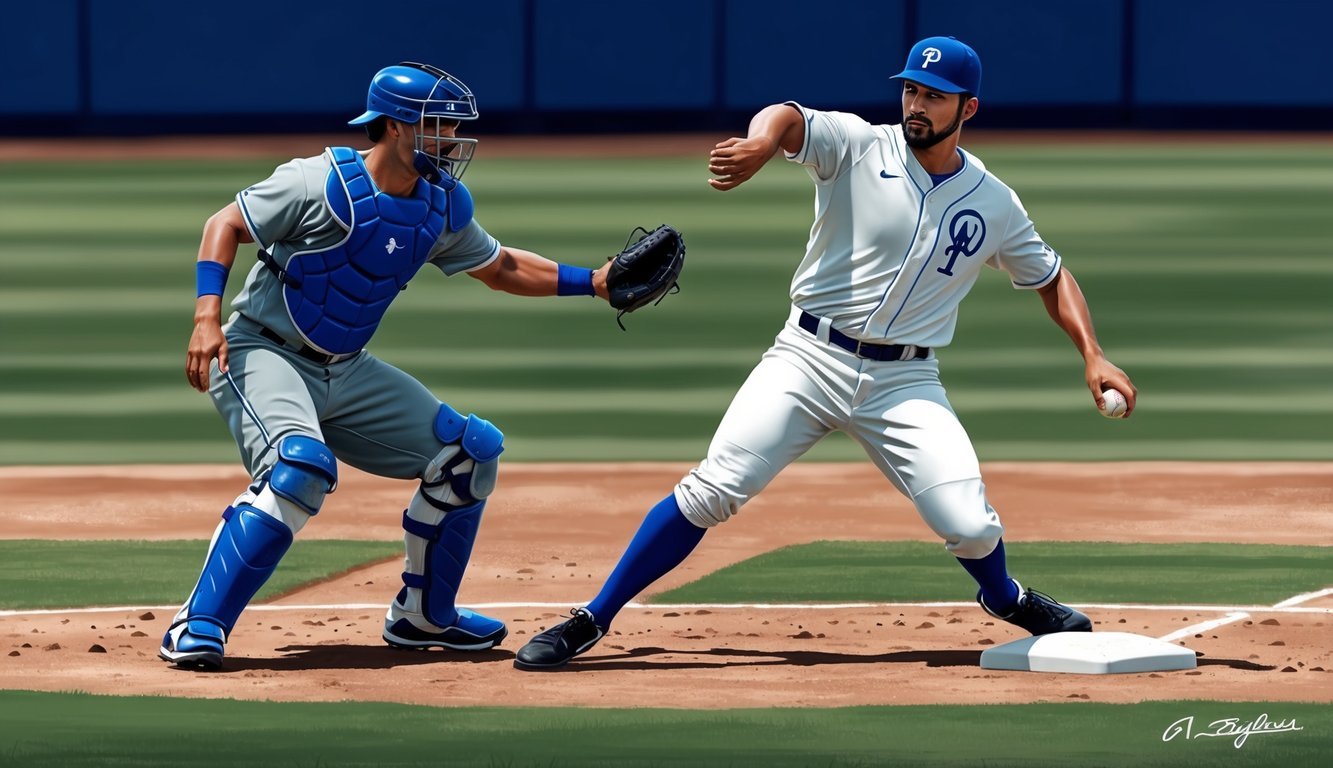The first baseman holds a crucial role on any baseball team’s defense.
Positioned near first base, this player is responsible for fielding ground balls, catching throws from other infielders, and making crucial plays to record outs.
Many of the greatest sluggers in baseball history have played this position.
Throughout MLB history, several legendary players have made their mark as first basemen.
Names like Lou Gehrig, Albert Pujols, and Cap Anson stand out for their exceptional offensive production and defensive skills.
These players have set the standard for excellence at the position, inspiring generations of young athletes to strive for greatness on the diamond.
In recent years, first basemen like Nathaniel Lowe and Ty France have continued to showcase the importance of the position.
Their contributions at the plate and in the field have helped their teams reach the postseason and compete for championships.
As the game evolves, first basemen remain integral to a team’s success, combining power hitting with defensive prowess to make a significant impact on the field.
The Role of a First Baseman
The first baseman plays a crucial defensive position in baseball, combining fielding skills with strategic positioning.
This player guards first base and serves as a key target for infielders making plays.
Positional Responsibilities
First basemen are the primary receivers for throws to first base.
They must catch balls thrown by infielders to record outs on ground balls and force plays.
Often stretching to reach throws, first basemen need excellent flexibility and balance.
They also field ground balls hit to their area, making plays independently or tossing to pitchers covering first base.
During bunt situations, first basemen may need to charge forward to field the ball quickly.
First basemen serve as cutoff men for throws from the outfield to home plate.
They must be alert to backup throws to second base as well, preventing overthrows from advancing runners.
Defensive Skills
A first baseman’s catching ability is paramount.
They must handle a variety of throws – high, low, off-target – often while keeping a foot on the base.
Soft hands help absorb hard throws and prevent bobbles.
Footwork around the bag is critical.
First basemen practice the “stretch” – extending towards throws while maintaining contact with the base.
They also need agility to quickly come off the bag for errant throws.
The ability to scoop low throws out of the dirt is a prized skill.
This can save errors and prevent runners from advancing.
Many first basemen win Gold Glove awards for their fielding prowess.
Quick reactions are essential for fielding line drives and bunts.
First basemen must also master throwing to other bases, particularly second base for double plays.
Historical Overview of First Basemen
First base has been a crucial position in baseball since the sport’s inception.
The role has evolved significantly, with legendary players shaping its importance and defensive expectations.
Evolution of the Position
First base began as a defensive position focused on fielding ground balls and catching throws.
As the game progressed, teams started placing power hitters at first base.
This shift allowed players with less mobility but strong hitting abilities to contribute significantly.
The position’s defensive requirements expanded over time.
First basemen developed skills like stretching for throws and scooping low balls.
They also became key players in executing pick-off plays with pitchers.
During World War II, many star first basemen left to serve in the military.
This absence led to temporary changes in team strategies and player development at the position.
Legendary First Basemen
Lou Gehrig set the standard for excellence at first base.
His incredible hitting streak and defensive skills made him a baseball icon.
Jimmie Foxx, known as “Double X,” was another powerhouse hitter who dominated the position in the 1930s.
Hank Greenberg’s return from military service was marked by a dramatic grand slam.
His power hitting helped redefine the role of first basemen as offensive leaders.
Willie McCovey and Eddie Murray showcased the longevity possible at first base.
Both joined the 500 Home Run Club while maintaining solid defensive skills throughout their careers.
More recent Hall of Famers like Frank Thomas and Todd Helton continued the tradition of first basemen as offensive leaders.
Their consistent hitting and fielding helped shape modern expectations for the position.
Modern First Basemen

First basemen in today’s MLB combine power hitting with defensive prowess, playing a crucial role in their teams’ success.
These players are often among the league’s top offensive producers while also providing solid glove work at first base.
Current Stars
Freddie Freeman of the Dodgers stands out as one of the premier first basemen in the game.
His consistent high batting average and impressive power numbers make him a perennial MVP candidate.
Paul Goldschmidt of the Cardinals is another elite player at the position, known for his all-around skills at the plate and in the field.
Matt Olson of the Braves has emerged as a force, blending excellent defense with prodigious power.
Pete Alonso of the Mets has quickly become one of the most feared sluggers in the league, racking up impressive home run totals.
Vladimir Guerrero Jr. of the Blue Jays represents the new generation of first basemen.
His youth and incredible hitting ability have many predicting multiple MVP awards in his future.
What Defines a Great First Baseman Today
Today’s top first basemen are expected to be offensive powerhouses.
A high wRC+ (weighted runs created plus) is crucial, with the best at the position often exceeding 140.
Home runs and RBIs remain important metrics, but on-base percentage has gained significance.
Defensively, modern first basemen need to be agile and sure-handed.
They’re often tasked with scooping low throws and making plays on bunts.
While not typically known for speed, good footwork around the bag is essential.
Versatility is increasingly valued.
Some players, like Rhys Hoskins of the Phillies, have transitioned from other positions to first base.
This adaptability can be a major asset to teams looking for lineup flexibility.
Training and Preparation

Becoming an excellent first baseman requires dedicated practice and a well-rounded approach.
Players must focus on developing specific skills while maintaining overall physical and mental fitness.
Skills Development
First basemen need to hone their fielding abilities through targeted drills.
Regular practice catching throws from infielders improves hand-eye coordination and soft hands.
Working on footwork around the bag helps players make quick adjustments for off-target throws.
Practicing scoops and picks for low throws is crucial.
Hitting drills are also essential, as first basemen are often expected to be strong offensive contributors.
Batting practice should focus on power hitting and situational hitting skills.
Players can use tee work, soft toss, and live pitching to refine their swing mechanics.
Additionally, drills that emphasize plate discipline and pitch recognition can help first basemen make better contact and drive in runs more consistently.
Coaches and parents should ensure that young players use the appropriate equipment, such as choosing what size bat for 8 year old players to maximize their swing efficiency.
Proper bat selection, combined with dedicated practice, can significantly improve a player’s hitting performance.
Physical and Mental Fitness
Strength training is vital for first basemen to handle the physical demands of the position.
Exercises targeting the legs, core, and upper body help improve fielding range and hitting power.
Flexibility work, especially for the lower body, is crucial for maintaining the splits position.
Mental preparation is equally important.
First basemen must stay focused throughout the game, anticipating various plays.
Visualization techniques can help players mentally rehearse different game scenarios.
Developing a strong baseball IQ through film study and understanding offensive and defensive strategies is also beneficial.
Career Paths and Progression

First basemen have diverse career trajectories in professional baseball, from their early days as rookies to potentially becoming Hall of Fame inductees.
Their journeys often involve significant milestones and accolades that showcase their skills and contributions to the sport.
From Rookie to Veteran
Many first basemen start their careers as highly touted prospects, with some earning Rookie of the Year honors in their debut seasons.
As they gain experience, these players refine their defensive skills and develop their hitting prowess.
Younger players often learn from veteran teammates, honing their footwork and positioning at first base.
Top performers may secure long-term contracts with their teams, becoming fixtures in the lineup.
Some first basemen transition to designated hitter roles later in their careers, extending their playing time by focusing on offensive contributions.
Achieving Recognition
Outstanding first basemen can earn numerous accolades throughout their careers.
Top performers commonly receive All-Star selections.
These recognize their excellence on both offense and defense.
The most elite players may win MVP awards, showcasing their overall value to their teams.
Defensive prowess is honored through Gold Glove awards, while Silver Slugger trophies celebrate offensive achievements.
Career milestones like 500 home runs or 3,000 hits often pave the way for Hall of Fame consideration.
Players who maintain high levels of performance over many seasons build impressive career values.
This can potentially rank them among the top 10 first basemen of all time.
Hall of Fame induction represents the pinnacle of recognition for the position’s greatest players.
